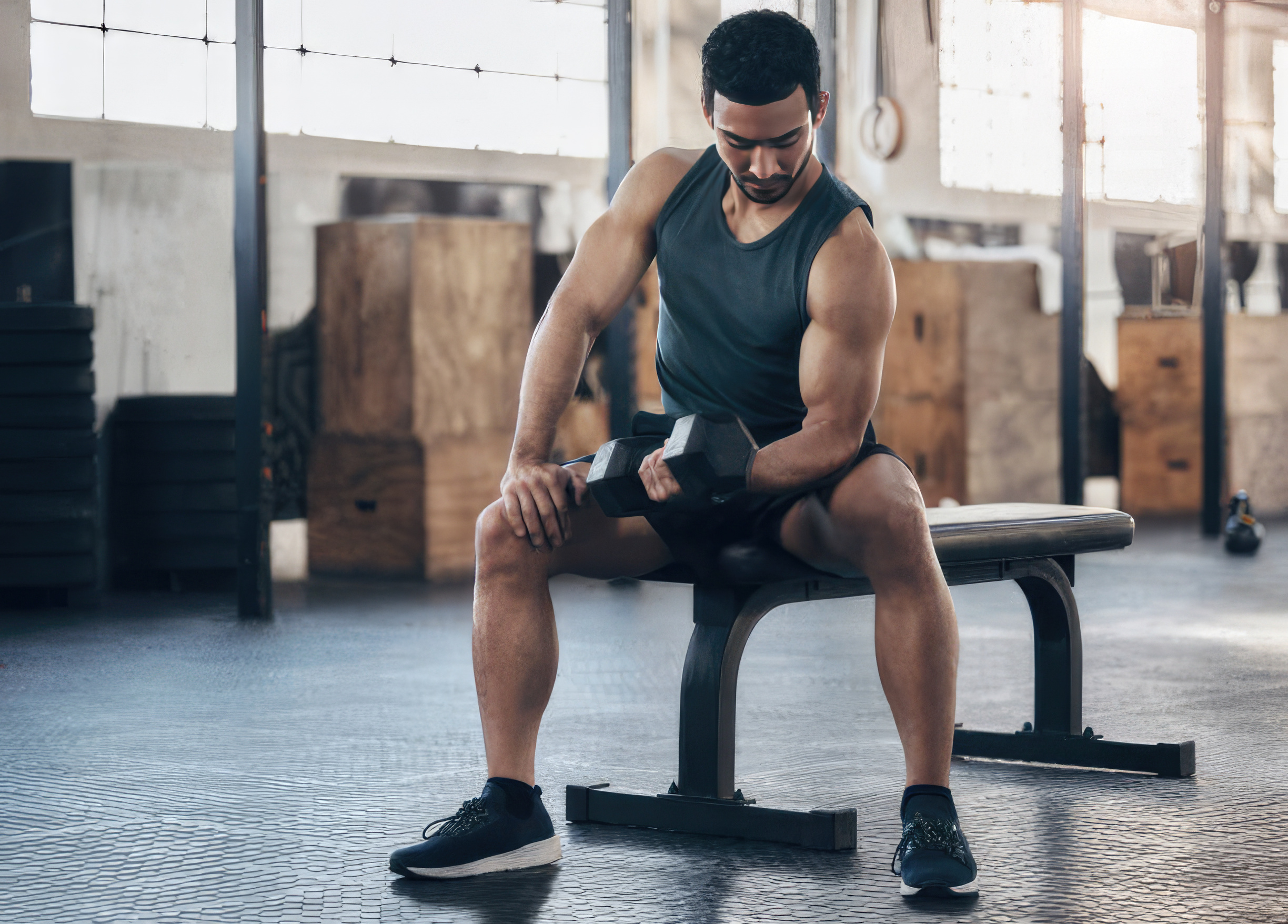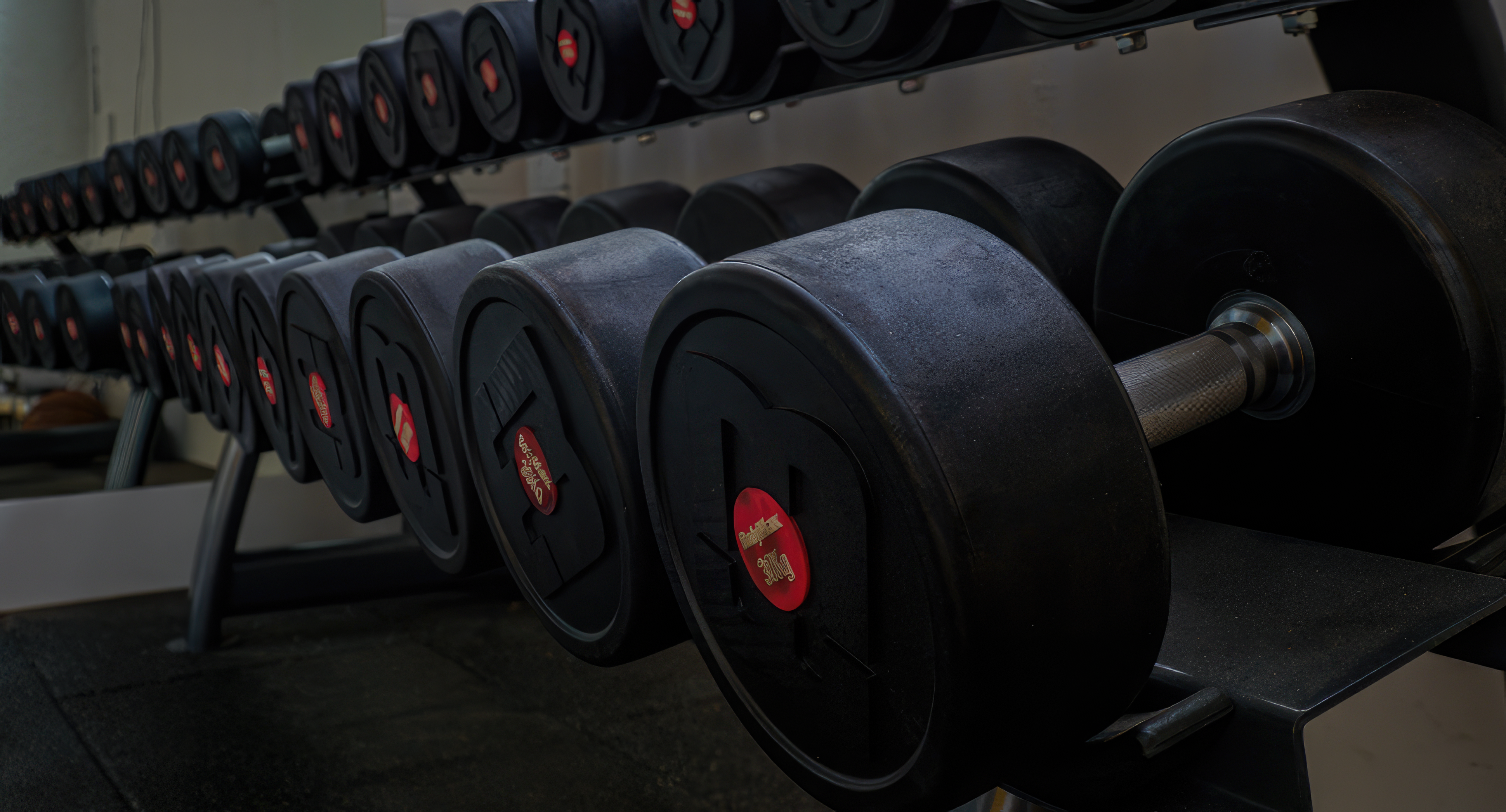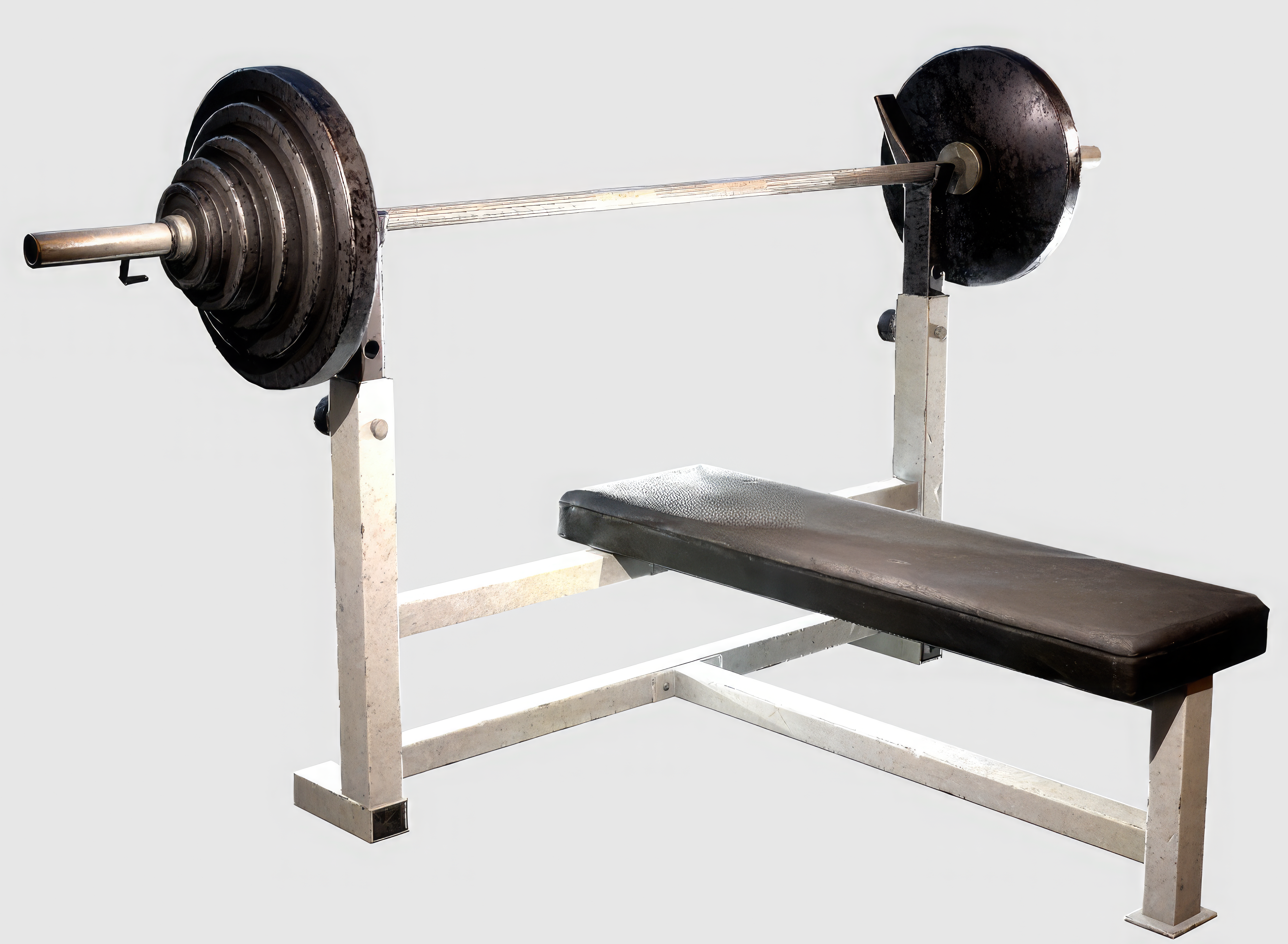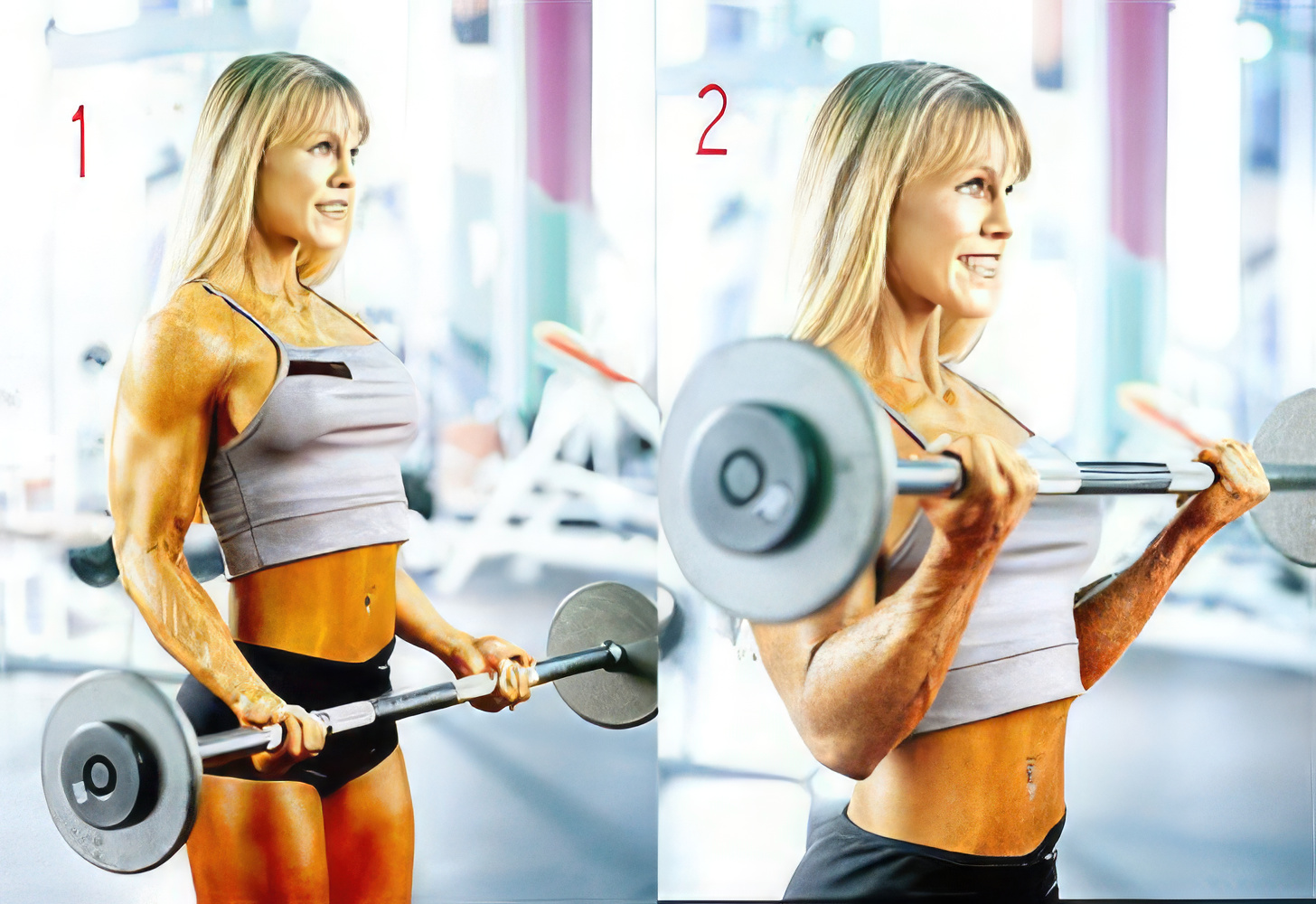The incredible world of pumping iron…

You’ve probably already got a pretty good idea of what weight training is all about. You’ve may have seen people down at your local leisure centre or gym lifting weights – grunting and groaning, throwing weights around that the average person might not even be able to lift off the floor! Well, that is weight training! At least, a snap-shot in time of weight training. The actual ‘art’ of weight training is far more intricate than that however.
The basics
At it’s most basic, the whole idea is that you exhaust your muscles through lifting weights (or pumping iron as it’s sometimes known) and as a consequence of this your body makes your muscles bigger and stronger.
Sounds great doesn’t it? You just do some weight training and your get bigger and stronger! Fantastic! But wait one minute, young weight lifter! It’s a little (okay, a lot!) more complicated than that. Let me throw a few questions at you. You’ve got a barbell (the five foot or longer bars; the shorter ones are called dumbells) – what do you actually do with it? How do you lift it so that your body responds and grows? How much weight do you use? How much do you train each muscle in any given workout? How often should you train? The questions are almost endless – even the most advanced of weight lifters can still learn new and better ways to weight train. It is not enough to know that lifting a barbell can make you big – you need to know how to lift it and how often and with how much weight. Only then will you put yourself in the drivers seat for packing on the muscle!
Weight Lifting equipment
Their is a lot of equipment that has been designed for weight training. Just take a look in your local gym and you’ll all sorts of strange and wonderful weights, bars and machines. If it’s a big gym the number of different pieces of equipment will probably blow your mind the first time you take a look! Don’t worry, though, as you’ll soon learn what each apparatus does and how, when everything is boiled down, there aren’t really that many different pieces of equipment. Let’s examine the ‘core’ equipment – the bread and butter of any bodybuilder’s arsenal of muscle building equipment!
The Barbell

The barbell is the long (five or six feet long) straight barbell that you’ll find many of in every gym across the world. It’s the most basic yet most useful piece of equipment in existence and will be for years to come. It is designed to be used by gripping it with both hands (and equal distance apart from the middle of the bar – normally just wider than shoulder width but this varies depending on with exercise you are currently performing).
At each end of the barbell (or bar for short) there are sections for putting on plastic or steel plates (know simply as ‘weights’) of different sizes and thus weights so that you can alter the overall weight of the bar to suit your requirements. This is the absolute and essential basic requirement for any piece of weight training equipment – it must allow for you to be able to alter its weight progressively so that as you get stronger you can increase the weight accordingly. You won’t get very much stronger if you only heft the same weight around time after time!
There are many different exercises you can do using a barbell, each designed to affect one or more different areas of your body. In fact, there are several exercises for each part of your body. Want to get bigger biceps? I can think of five different exercises you can do for them just using a barbell! If you’re thinking of setting up a home gym (see our section on training at home) then including a barbell and assorted weights is an ESSENTIAL part of your home equipment. I can’t emphasize this enough.
The Dumbbell

The dumbbell is a basically a dumbbell is a really short version of the barbell, with just enough space between the weights to grasp it with one hand. They can be used two at a time (one in each hand) or one at a time (bilaterally). Training one arm at a time can be very effective for some exercises as it allows you to concentrate better on one side of your body at a time and also enables the use of some more advanced training techniques as described elsewhere (look up forced reps and negatives).
The Weight Bench

In every single gym you will find at least one weight bench (and probably many of them, in all different shapes and configurations). They are used in many different exercises and range from the simplest flat, horizontal benches with no structure for holding a barbell to ones that allow you to lie at an incline or decline and have the capacity to support a barbell before you lift it into position (as in the photo shown here).
In most gyms you’ll find that the bench’s are very popular with the more ‘hard core’ bodybuilders who prefer using barbells, dumbbells and benches over the exercise specific machines that are mentioned below.
The Lift
Unfortunately many bodybuilders train very sloppy and dangerously when they weight train as they’re either too lazy to use proper ‘form’ (i.e. do the exercise correctly) or have never took the time to learn how to perform the different exercises without exposing themselves to unnecessary risk.
The golden rule is to use as little ‘Body English’ or ‘Cheat’ as little as possible until the last rep, and possibly not even then. What’s Body English, you ask? Basically it is where the weight trainer uses their body, arms, legs etc. – whatever there is available to them depending on the exercise – to swing the barbell, dumbbells or whatever through the exercise, rather than using pure muscle power. Many ego mad bodybuilders will use far too much weight on their barbells etc. and so because they don’t have the strength to lift the weight they have to ‘Cheat’ the weight through the repetition (one lifting and lowering of the barbell / dumbbell / machine). Others simply use ‘Body English’ because they have no better idea and don’t realize that they’re preventing themselves from gaining as much benefit from their weight training as they could be. There ARE times when Cheating is beneficial, but this is an advanced topic and is covered elsewhere.
Let’s walk you through a very popular exercise, the standing barbell biceps curl. This exercise is a ‘bread ‘n butter’ exercise for biceps that just about every bodybuilder in the world uses week in, week out.
The Standing Barbell Curl

Take a barbell, a nice and light one at that (preferably a bar with some very light weights on it), and stand up straight with it so that it rests against your thighs (arms almost but not quite straight). Your grip on the bar should be that if you weren’t holding the bar your palms of your hands would be facing out away from you, as if you were showing the person in front of you what is in your hands. You should be in a similar position to figure 1 in the image above.
Next, slowly curl the barbell upwards, keeping your elbows fairly tight in to your sides – they should move slightly away but don’t allow them to move forward in front of your body – this is bad as it takes the emphasis off your biceps and encourages Cheating. You should feel your biceps tensing as you curl the weight up.
Once the barbell gets to the same height in figure 2, stop curling the barbell up – you do not want the barbell to move too far round as otherwise you’ll just end up with it resting on your shoulders and that doesn’t exercise your biceps at all, it just gives them a nice lazy rest at the top of the repetition (or rep, for short).
You have now completed one half of the rep, the muscle-contracting ‘Positive’ phase of the lift. The second half is the part where you lower the weight back down to its starting position and this is called the ‘Negative’ part of the lift. With the standing barbell curl you simply un-curl the barbell back down to it’s starting position near your thighs, ready to begin the next rep. You should lower the weight under full control, and slightly slower than you did the positive phase. I.e. if you took 3 seconds to lift the barbell up to the top position then you should take 4 or 5 seconds to lower it back down. This ensures you lower the weight safely and get the maximum benefit from it.
The Set
Now you know how to perform a repetition of an exercise you need to know what to do with it! When performing a lift such as the standing barbell curl you will perform the exercise in groups of repetitions known as a ‘Set’. The aim is for each Set that you do to tire out your muscles so that by the end of the workout your muscles are very fatigued and it is this demand that you’ve put on your muscles that encourages your body to respond by making them bigger and stronger. It is by repeating this demand on your muscles week in week out for years that you will reach your long term bodybuilding goals.
The number of repetitions you’ll perform in each set will vary greatly according to the exercise in question (so exercises work better with more reps, some with fewer), how much weight you are lifting (if it’s light you’ll do many reps, if it’s very heavy you’ll manage only a few reps) and what your intentions are at that moment (you might just be warming up – as you should do for every exercise in each workout you do! – and so you’ll be using a light weight and doing 15 to 20 reps and stopping before it gets even moderately taxing).
For warm up sets do perhaps 15 – 20 reps, for main sets do between 6 – 15 reps. Most bodybuilders ‘pyramid’ their weights heavier for each exercise during a workout. For example, take the standing biceps curl. I would start of doing one or two warm up sets, using a very light weight and performing 15 – 20 nice slow and easy reps just to warm the biceps, elbows and tendons up prior to getting down to business in the main sets. Once warmed up I’d the select a weight that I could perform 15 reps or so with, with the 15th rep being the last possible rep I can manage (this is called ‘Failure’ – doing as many reps as you can until you can’t do any more). My next set would then be slightly heavier and I might only get 10 reps as the previous set has tired me out a bit and the weight is heavier. I might then stop there and go on to the next exercise or I may do one final set, with yet more weight on the bar for perhaps only 6 or 8 reps. This increase in weight set by set is what is known as pyramiding and is a great way to help prevent injury by increasing the weight only as your muscles and tendons etc. warm up progressively.
Rest between sets
The amount of time you need to rest between each set will vary according to how hard you trained the set before, how big the muscles are you are currently training (bigger muscles tax you more so you need more rest) and what your current goals are – for fat loss or to get some cardiovascular benefit from your weight training you can benefit by keeping your rest between sets as low as you feel comfortable with. If you’re going for pure muscle or strength gains go for longer rest periods (anything up to two minutes or longer if you are training with a partner) so that you are as recovered as possible for the next set.
Sets per exercise / workout
The number of sets you perform per exercise and workout will vary according to your current achievements in bodybuilding (bigger bodybuilders tend to do more sets than novices) and your current objectives – if you’re trying to lose body fat (‘cut up’) then you may well perform more sets and more reps per set. If you’re trying to gain strength at all costs then you’ll perform a fair number of sets but with lower reps and more weight. To begin with most novice bodybuilders will perform one or two main sets per exercise and two or three exercises per muscle group. This is plenty to begin with and to do more will expose you to the risk of over-training and is counter-productive. Don’t spend any longer in the gym you have to – get in, blast your muscles as quickly, efficiently and most of all safely as possible and then get out and get some food – this is the best way to get big, fast.
Want to learn more? Read our guide on packing on muscle.

Guntur is a bodybuilding and powerlifting enthusiast. He is also the main author of this blog https://learn-bodybuilding.com/
Guntur also works as a Personal Trainer in his town.
In his free time, he likes to learn new languages and reading.
You can contact him from this website’s Contact Page.